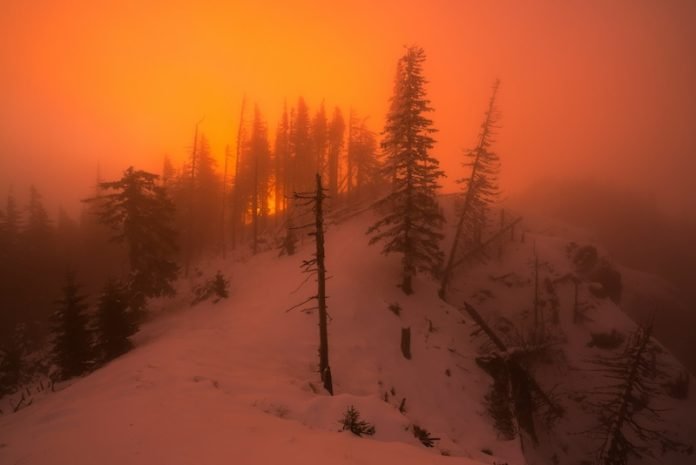
A recent study using data from NASA satellites sheds light on the challenging recovery of western ecosystems after wildfires, particularly under the strain of ongoing drought conditions.
This finding is crucial for guiding conservation efforts in a region that has seen an uptick in both the frequency and intensity of wildfires.
Traditionally, wildfires are a natural part of the West’s ecological cycle, but the combination of climate change—marked by more severe droughts—and historical fire suppression tactics has complicated the landscape’s ability to rebound after fires.
The research analyzed over 1,500 wildfires that occurred between 2014 and 2020 across the Western United States, alongside drought data stretching back to 1984.
The study revealed that drought conditions significantly hamper the recovery of grasslands and shrublands, such as those found in Nevada and Utah, even after less severe fires.
Interestingly, forests showed a more robust rebound, likely due to some trees’ ability to access deeper groundwater through their root systems. These insights were published in the journal Nature Ecology & Evolution.
Shahryar Ahmad, the study’s lead author from NASA’s Goddard Space Flight Center, emphasized the slow recovery of grasslands from even low-severity fires when preceded by drought conditions.
This slow recovery raises concerns about the ecosystems’ resilience to consecutive environmental stresses, potentially leading to lasting changes in vegetation types. Such shifts could increase risks related to soil erosion, landslides, and altered water runoff patterns, impacting streams and lakes.
Everett Hinkley, the U.S. Forest Service’s national remote sensing program manager, highlighted the importance of this research in guiding post-fire remediation efforts.
Understanding how different ecosystems respond to wildfires helps determine the necessary actions for landscape restoration to prevent adverse changes in land cover, which could, in turn, affect agriculture, tourism, and local livelihoods.
To monitor ecosystem recovery, the researchers focused on changes in evapotranspiration (ET)—the process through which water is transferred from the land to the atmosphere by evaporation from the soil and plant transpiration.
This approach helped them assess whether ecosystems like forests and grasslands fully recovered after a fire or if their recovery was hindered.
Evapotranspiration data was sourced from OpenET, a tool that uses models and publicly available data from the Landsat program—a partnership between NASA and the U.S. Geological Survey—and other satellites to estimate water transfer at a very detailed scale across the western U.S.
Erin Urquhart from NASA Headquarters underscored the crucial role of drought in determining vegetation resilience to wildfires in the West.
She called for collaboration among land managers, policymakers, and communities, informed by such research, to adapt to climate changes, mitigate risks, and ensure sustainable resource use.
The study also indicated that forests, grasslands, and shrublands struggle to recover from droughts closely following high-severity fires, a scenario becoming increasingly common.
This can lead to lasting changes in vegetation and local to regional water dynamics, with severe fires reducing evapotranspiration and consequently altering water distribution in the environment.
By examining a subset of nearly 800 fires from 2016 to 2018, researchers estimated that an average of about 528 billion gallons of water—equivalent to North Dakota’s annual water demand—was redirected as runoff or ground recharge in the year following a fire.
This shift suggests potential challenges for ecosystem recovery and agricultural water availability amidst a warming climate, highlighting the need for strategic water resource management and conservation planning for the future.
The research findings can be found in Nature Ecology & Evolution.
Copyright © 2024 Knowridge Science Report. All rights reserved.



